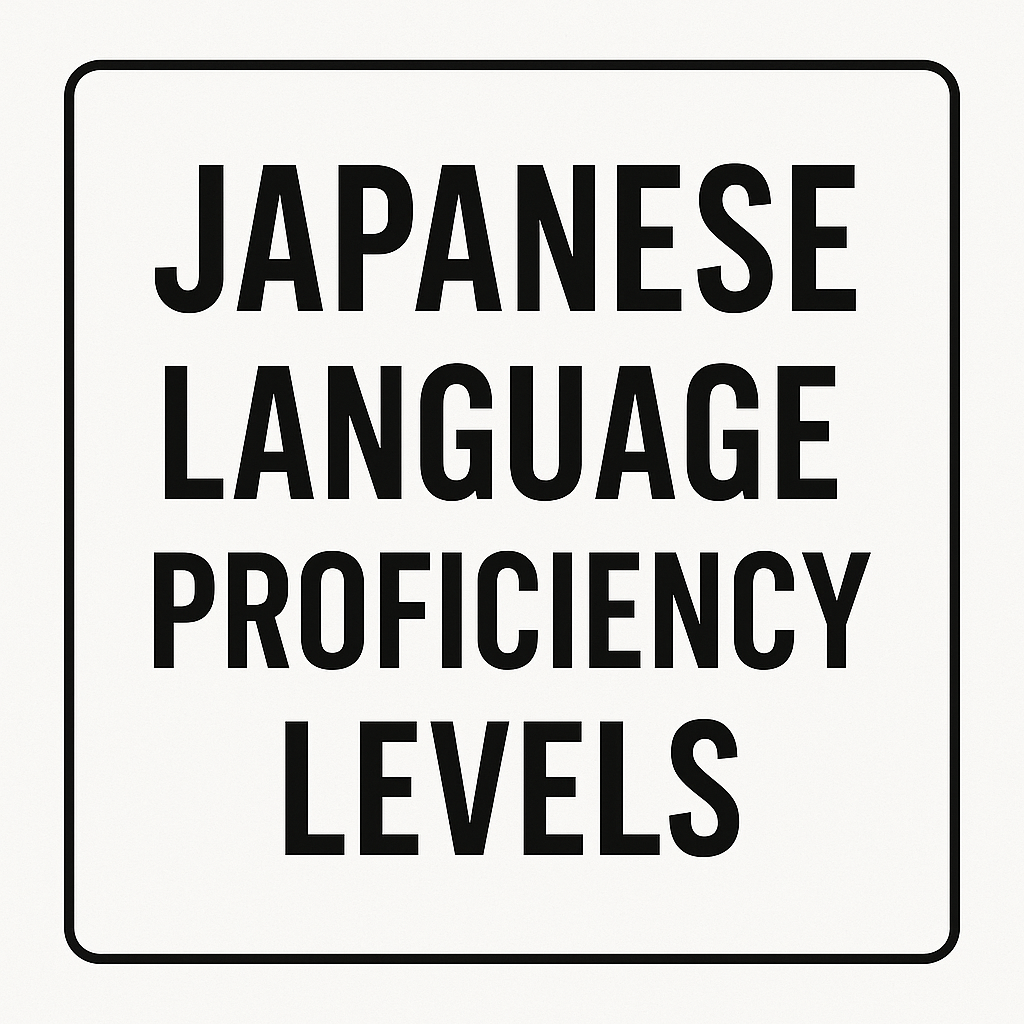10 Surprising Differences Between Japanese Language Proficiency Levels N1 to N5 — You Might Be Studying Wrong!
What Are...

Japanese language proficiency levels help learners understand their current abilities and set goals for improvement. Whether you are a beginner or aiming for fluency, knowing your level is essential.
In Japan, the most recognized standard is the Japanese-Language Proficiency Test (JLPT), which divides learners into five levels: N5 (beginner) to N1 (advanced).
JLPT Levels Explained

JLPT N5 – Basic Beginner
- Understand basic phrases and greetings
- Read hiragana, katakana, and simple kanji
- Ideal for those just starting out
JLPT N4 – Elementary
- Comprehend daily conversations at a basic level
- Read passages on familiar topics
- Recommended after 3–6 months of study
JLPT N3 – Intermediate
- Understand more complex sentences
- Read articles and short essays
- Often required for part-time jobs in Japan
JLPT N2 – Upper Intermediate
- Read newspapers and understand business-level conversations
- Commonly required for university admission or full-time employment in Japan
JLPT N1 – Advanced
- Understand academic and professional Japanese
- Read and analyze complex materials
- Recognized as near-native fluency
You can find more information here from JLPT site.
Other Frameworks of Japanese Language Proficiency Levels
Besides JLPT, other frameworks exist:
- CEFR Levels (A1 to C2): Used in Europe
- ACTFL Guidelines: Used in the United States
- Our school offers placement tests aligned with all major systems
How to Check Your Japanese Level
We recommend the following:
- Take a free placement test (link to your test page)
- Consult a teacher for a personalized assessment
- Use past JLPT papers to self-evaluate
Best Resources by Proficiency Level
We provide custom resources for each stage:
Start Your Japanese Journey Today
Understanding Japanese language proficiency levels is the first step to success. Whether you're preparing for the JLPT or just want to speak with confidence, we're here to guide you.
Why Understanding Japanese Language Proficiency Levels Matters
Knowing your Japanese language proficiency level is more than just a label—it’s a powerful tool for effective learning. By identifying where you stand, you can:
- Set realistic learning goals
- Choose the right study materials
- Track your progress over time
- Prepare for job or school applications in Japan
For example, if you're aiming to work in Japan, most employers require JLPT N2 or higher. On the other hand, travelers or casual learners may only need N5 or N4 to enjoy conversations and read signs confidently.
Tips to Advance Through the JLPT Levels Faster
Whether you're studying on your own or with a tutor, these tips can help you level up:
- Consistent Practice: Daily exposure to Japanese—even 20 minutes—makes a big difference.
- Use Graded Readers: These help you learn vocabulary and grammar that match your level.
- Watch Japanese Media: Anime, dramas, and YouTube channels with subtitles improve listening and pronunciation.
- Take Mock Tests Regularly: Simulate real test conditions and time limits.
- Join a Language Community: Practice speaking with native speakers or fellow learners online or in person.
What Comes After N1?
Achieving JLPT N1 is a major milestone, but learning doesn't have to stop there. Many learners choose to:
- Take specialized courses in business Japanese
- Study for translation or interpreting qualifications
- Enroll in Japanese universities
- Read novels, newspapers, or research papers in Japanese
Mastery of Japanese is a lifelong journey—but it begins with knowing your current level and moving forward step by step.
Frequently Asked Questions (FAQ)
Q1: What is the highest level of Japanese language proficiency?
A: The highest level is JLPT N1, which indicates near-native fluency in reading, listening, and understanding complex Japanese.
Q2: How long does it take to pass JLPT N2?
A: It typically takes around 600–900 hours of study, depending on your language background and learning method.
Q3: Do I need to pass lower levels before taking JLPT N1?
A: No, you can register for any JLPT level directly, based on your current proficiency.
Q4: Is JLPT required to study or work in Japan?
A: Many universities and employers require JLPT N2 or N1, especially for academic programs or professional jobs.
Q5: How can I check my Japanese level for free?
A: Take our free Japanese level check test online to get a personalized assessment and course recommendation.

